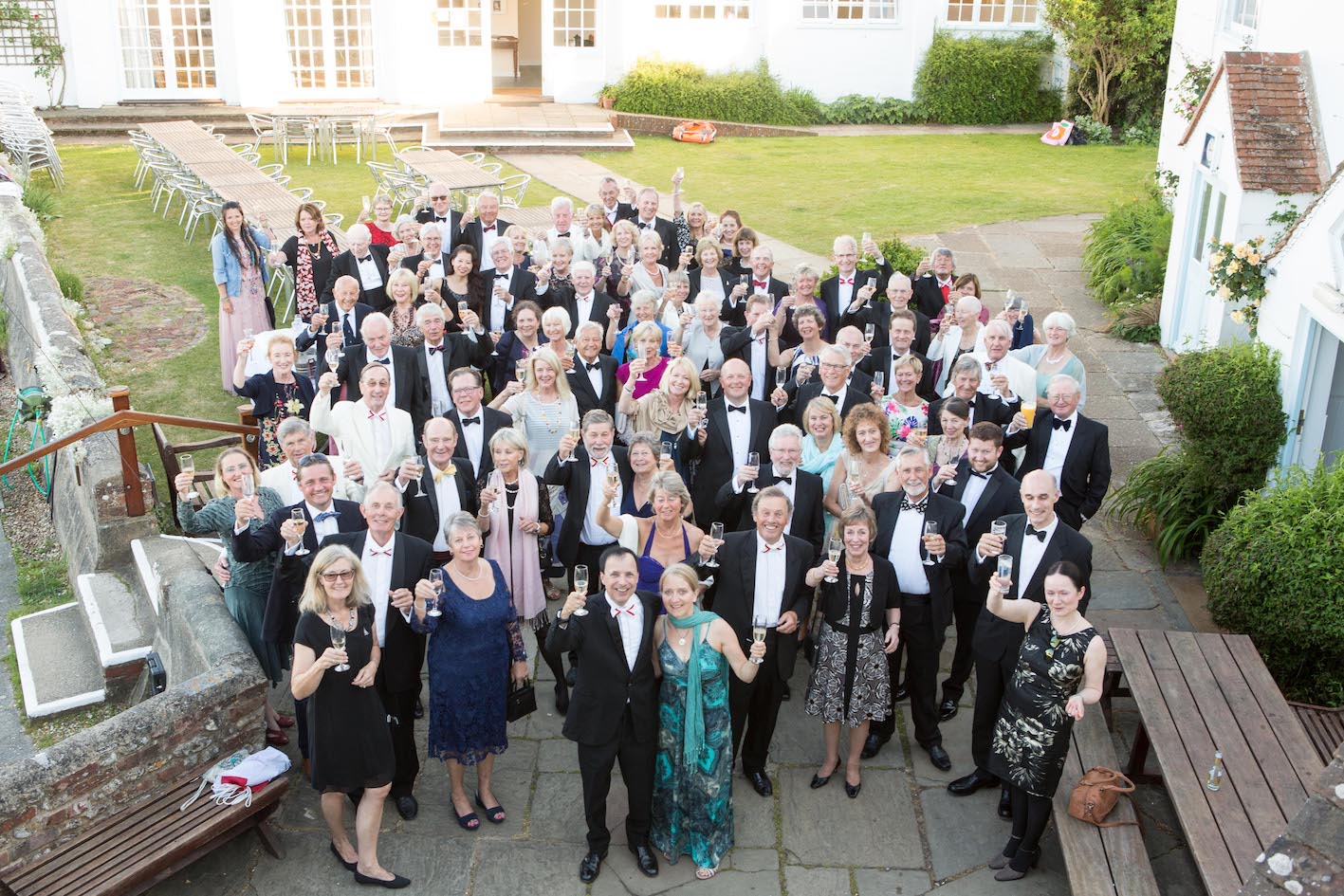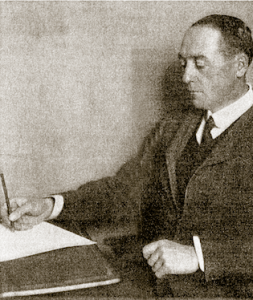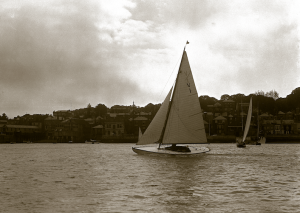by Sarah Johnson
In 1923 when she was launched, the yachting media noted, ‘The new Solent Sunbeam One Design Class, from the board of Messrs Woodnutt of St Helens Isle of Wight, promises to be one of the best which has ever been produced. The design shows a powerful yet sweet lined little vessel with ample beam and draught. The lines and sail plan of the Sunbeams cannot fail to appeal to yachtsmen who are on the look-out for a really able little boat.’
The popularity of the design is still as strong today as it was 95 years ago with nearly 70 Sunbeams still regularly racing and sailing today, including hull numbers 1,2 & 3 which were all built in 1922/3. The Sunbeam was designed by Isle of Wight Naval Architect, Alfred Westmacott who was already well known for designing a string of successful one-design keelboats; the Mermaid, X Boat and Yarmouth one-design, all of which are still active in the Solent today.
The 1920s was the era of beautiful yachts with stunning designs from the likes of William Fife, G L Watson and Charles Nicholson. Yachting was an elite pastime, the vessels were large, requiring many hands; it was an elegant time. Hamble River Sailing Club was looking for a new one-design yacht for its members to race and asked Club Commodore and Tall Ship historian Basil Lubbock and Tall Ship historian to commission a design. Basil went to Naval Architect, Alfred Westmacott, based on the Isle of Wight, who was already well known for designing a string of successful one-design keelboats – the Mermaid, X Boat and Yarmouth one-design, all still well-known and active in the Solent today. The specification was to produce an 8-metre boat – an ‘improved Mermaid’; the first one-design class with a Bermudan rig. In many ways Westmacott managed to capture the ‘poetry’ of the 1920s large yacht design with his new 8m keelboat, and many regard the Sunbeam as his masterpiece.
Certainly, the yacht performed even beyond the expectations of new owners with 7 boats completed within 4 months of V1’s launch and a further 11 delivered in the following year.
The founders of the new Sunbeam Class had understood the new design would be called the ‘Y’ class and so declared that all the yachts should have names ending in ‘y’. When it came to receiving the sail insignia it turned out to be ‘V’ instead of ‘Y’ but the name rule had already been made so most of the fleet still have names ending in ‘y’!
The popularity of the design is still as strong today as it was 95 years ago. Some believe it’s the long counter that extends the waterline, making her appear to have a faster ‘waterline’ speed, that means that sailing in all winds is really exhilarating. Undoubtedly the beautiful aesthetics and excellent sailing performance across the wind spectrum contribute hugely as well. Others remark on the high standard of competition on the water followed by extremely sociable gatherings back in the club-house!
Fortunately, much is known about the history and heritage of the Sunbeam Class due to an extensive collection of photographs that survive from the 1920s as well as some important watercolour paintings by Henry Tuke RA who owned Sunbeam V17, now called ‘Melody’, based in Falmouth. A fascinating and meticulous sailing log exists from Sunbeam V5 ‘Whimsey’, written by its original owner Colonel Bowdler. A truly incredible collection of all the official Class Association minutes and papers dating back to 1922 still exist in fabulous condition in leather bound books.
In the 1920s and 1930s the fleet sailed at open events all around the Solent, including at
Yarmouth, Lymington, Beaulieu, Cowes and Bembridge. In 1933 Itchenor Sailing Club was looking for a one-design fleet to introduce alongside its fleet of X boats and decided to adopt the Sunbeam class. A sister fleet had been established in Falmouth in 1924 and has raced there ever since, with both fleets coming together for special regattas.
Sir Henry Chisholm has undoubtedly had the most influence on the class in its 95-year history. He bought Sunbeam V24, Fay in the 1950s and immediately recognised that in the post-war era of petrol rationing, transport restrictions and reduced leisure income there was potential in one-design racing as a more cost-effective and highly social pastime. In 1948, a press release by Sir Geoffrey Lowles had described the Sunbeam as ‘big boat feel at small boat cost’.
As with many sports and yacht classes, the Sunbeam fleet has seen dips and rises in enthusiasm over its 95-year history. After WW2 it was a struggle to maintain numbers on the start line but a resurgence in the 60s and 70s saw fleet numbers increase. Today a training programme for newcomers, syndicate ownerships, the addition of ten GRP boats competing on equal terms and the enduring performance of the yacht on the water as well as competitive sailing and an extensive social program mean that good numbers turn out for the regular weekend and Thursday evening racing at Itchenor SC.
Whilst the fleet commands intense rivalry on the water, any issues and protests are traditionally settled on land over a cup of tea or pint in the clubhouse.
The full story of this stunning and enduring class has been detailed in a magnificent book called ‘The Brilliance of Sunbeams’ which is full of exceptional images gathered by Peter spanning the 95 years of the yacht as well as a huge array of adventures, stories, calamities and triumphs detailing the history of the fleet. Copies are available through www.solentsunbeam.co.uk.





